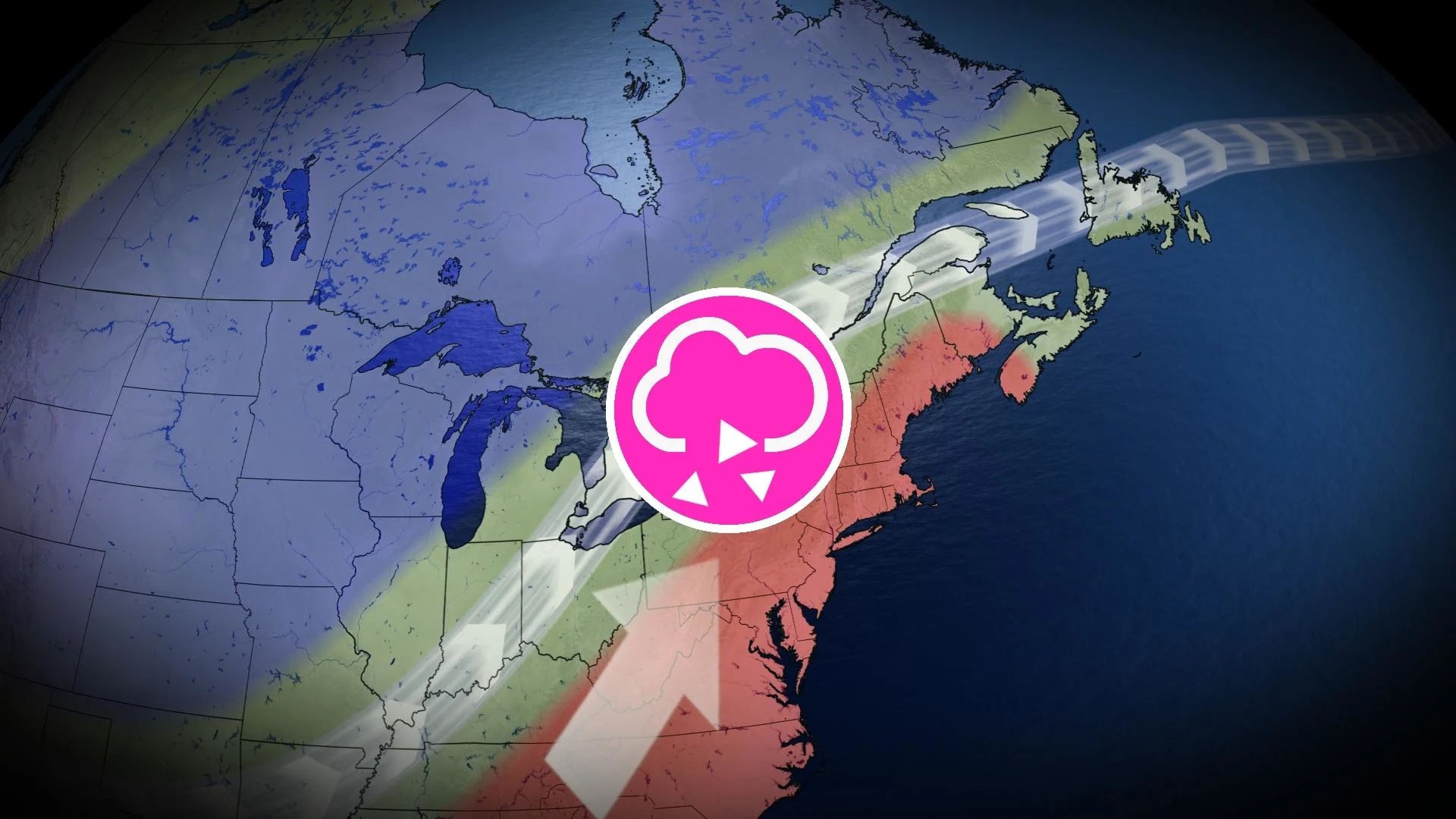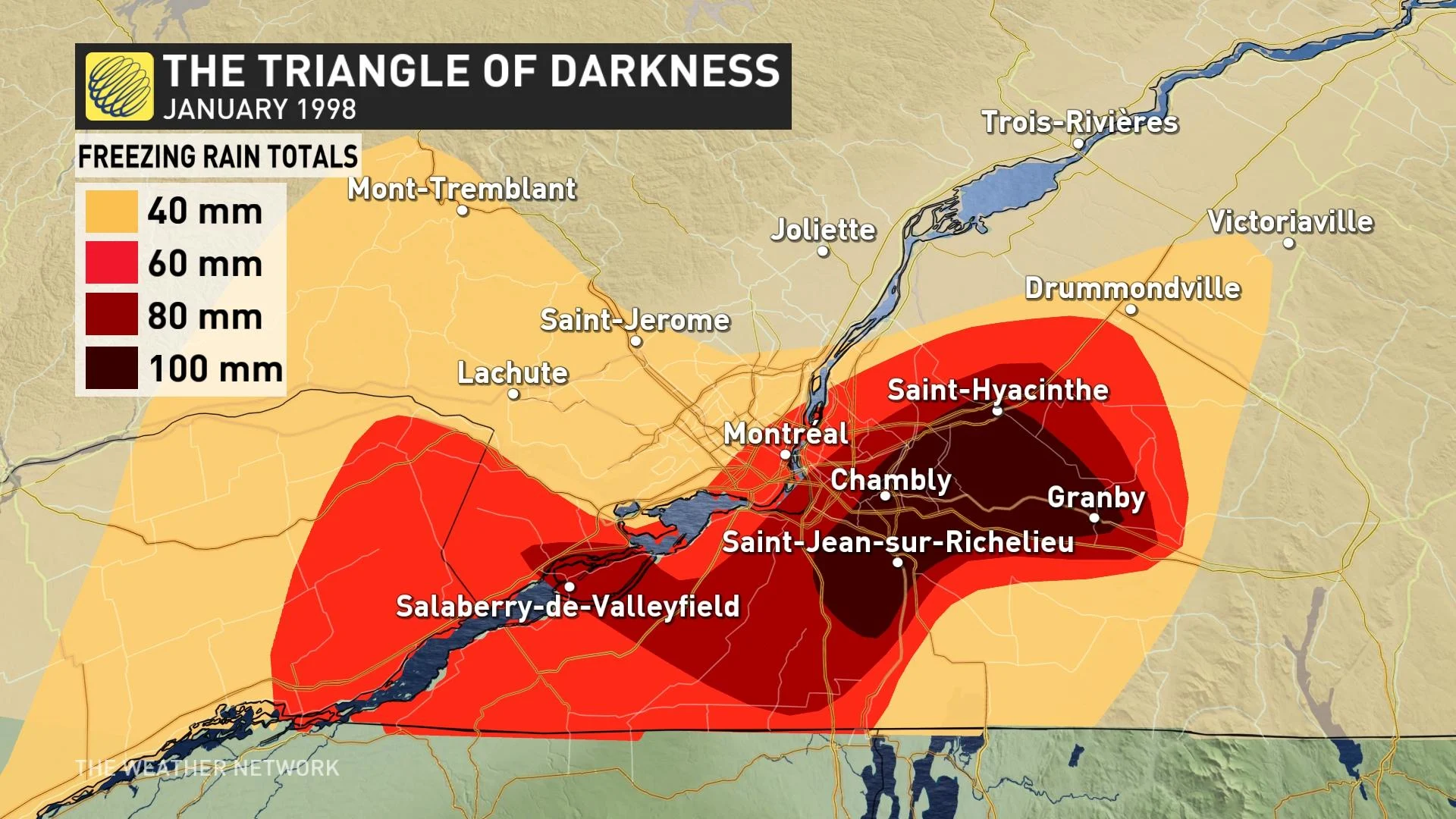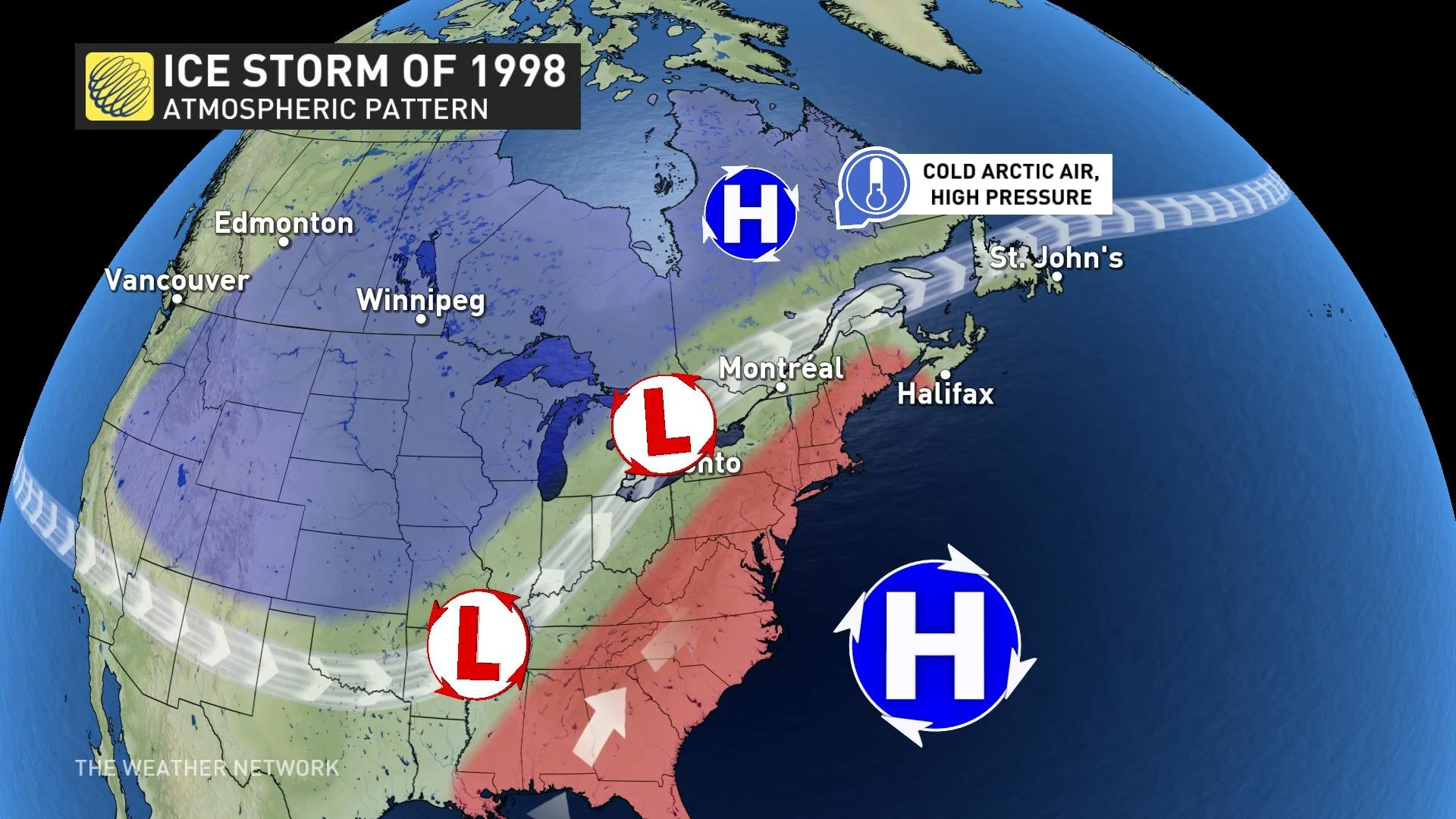
With a strong El Niño winter ahead, could the ice storm of 1998 repeat itself?
In 1998, the big North American ice storm occurred during an El Niño winter—a global pattern that we're currently in. MétéoMédia's Réjean Ouimet explains if we should prepare for a similar catastrophe this year.
The 1998 North American ice storm will forever be etched in the history books for its impact. About 16,000 Canadian Forces personnel were deployed to assist with the wrath that left 3.5 million Quebecers, more than a million Ontarians, and thousands in the Maritimes in the dark, some for several weeks. This was the largest deployment of Canadian military personnel since its involvement in the Korean War.
That ice storm came during an El Niño year—one we're currently in. So it begs the question, can we expect a similar event this year?
Before we answer that, it's important to understand what ingredients came together in 1998 to cause such a catastrophe.
Improbable freezing rain
To properly explain the phenomenon, one must understand the perfect recipe for an episode of freezing rain. Cold temperatures are required at very low altitudes. Freezing rain at -5 °C is possible but very challenging. Upon contact with objects, the water instantly or nearly instantly freezes. Consequently, danger ensues, not to mention the potential damage to the power grid and infrastructure if enough freezing rain accumulates.

The 1998 catastrophe is memorable: over 100 mm of freezing rain, up to a month without electricity in certain areas. Could such an event be repeated in Quebec?
"The Great Ice Storm of 1998 left a lasting impression on the residents of Quebec," says MétéoMédia meteorologist Réjean Ouimet. "It is commonly believed that it occurred due to El Niño. It would be more accurate to state that the freezing rain happened during an El Niño episode. Whether it is a small, medium, or major freezing rain event, two essential conditions are required: warm moisture at high altitudes and cold temperatures near the surface occurring simultaneously."

"El Niño, the main culprit?
In winter when there is a very intense El Niño near the coast of Central America, mild weather moves up towards Quebec, which becomes an ally for liquid precipitation.
"El Niño has two characteristics," explains Réjean Ouimet. "The fairly intense and active jet stream makes its way through the southern United States, which favours the development of storms. Its southern path brings it into contact with very humid, tropical air. The northward trajectory of the jet stream allows mild air to move up towards Quebec."
He adds that, "El Niño played its role in 1998, as it could potentially do [again] this winter."

RELATED: El Niño turns strong and still growing as winter fast approaches
An essential element
In addition to El Niño, there was also the presence of two high pressure systems (one in northern Quebec, another in the Atlantic) in 1998. The combination of these two phenomena played a crucial role in that historic event. Firstly, the high-pressure zone in the north pushed cold air down to the ground. Then, the one situated in the ocean helped create a kind of depression corridor that repeatedly struck Quebec, while pushing warm air in. The perfect recipe for multiple days of freezing rain.

SEE ALSO: Freezing rain is the 'worst' type of precipitation. Here's why
"Other elements that are not typical of El Niño also contributed in 1998," adds Réjean Ouimet. "A high pressure system in the Atlantic froze the atmosphere and the trajectory of high-level winds for several days. The systems were able to maintain a constant orientation. The trajectories favoured the same type of precipitation in the same regions repeatedly (for five days). And this is not typical of El Niño. Sequential low pressure systems were involved in 1998. The occurrence of multiple disturbances in a short period of time is part of the climate in North America. It can happen in any season, not only during El Niño."
Exceptional scenario
There is a possibility that such an episode may occur again, but all the ingredients must be in place for it to happen: surface air that is cold, aloft air that is warm, and a parade of moisture-laden systems are the necessary ingredients.
Although such a catastrophe is unlikely to repeat, this year may see major episodes of freezing rain -- just not to the magnitude of 1998.
While El Niño promotes milder winters in Quebec, it does not necessarily mean that a storm of the magnitude of 1998 will occur this year -- one reason being the incredible temperature difference in the ocean between 1998 vs. 2023.

